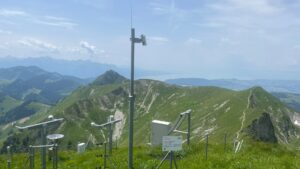Abstract/Description
Water scarcity is an increasingly pressing global issue, particularly affecting mountain regions vulnerable to climate change. Understanding water scarcity risks within socio-ecological-technological systems (SETS) is crucial for identifying the multifaceted impacts across watersheds, infrastructure, and water management systems. This study delves into the water scarcity risks in the Greater Asmara Area in Eritrea, a metropolitan region with a unique topographical setting where water must be pumped to a plateau, further compounded by rapid urbanization and severe watershed degradation. To comprehensively address this issue, our research adopts an integrated approach. We combine Impact Chain – a conceptual tool for mapping risk components and their interactions—with hydrological modelling using the GEOframe system to quantify trends in water availability. Additionally, stakeholder s engagement is a key component of our methodology, employed to systematically map societal challenges, validate the findings, and identify context-specific and actionable climate adaptation strategies. The analysis focuses on the exposure of households, industries, and institutions served by both centralized “Town systems” and decentralized “On-site systems” for water supply, highlighting the disparities between formal and informal water access. The study identifies critical vulnerabilities within the Greater Asmara Area water supply system, including land degradation, infrastructure inefficiencies, inequitable access to water, and increased exposure due to rapid urbanization. It highlights interaction between the risk components and their impact on water resources. Furthermore, the study lays the groundwork for co-creating scenario storylines that inform long-term urban water strategies in the Greater Asmara Area. The findings emphasize the need for nature-based solutions and ecosystem-based adaptation measures to mitigate water scarcity and enhance climate resilience. By integrating quantitative hydrological modelling with qualitative stakeholder insights, this research underscores the values of SETS-based frameworks for addressing complex water security challenges and offers actionable insights for improving water security and fostering sustainable climate adaptation in vulnerable urban regions.


